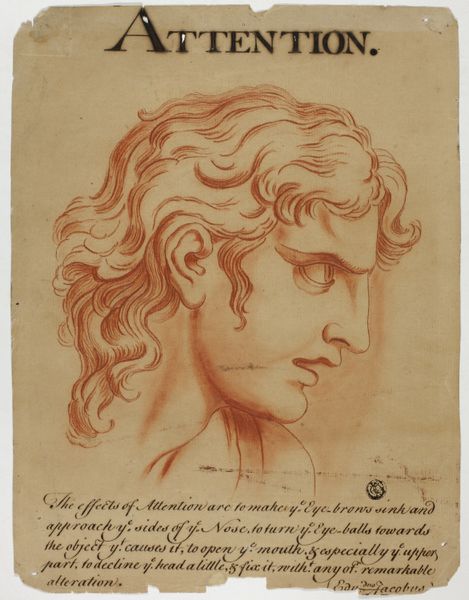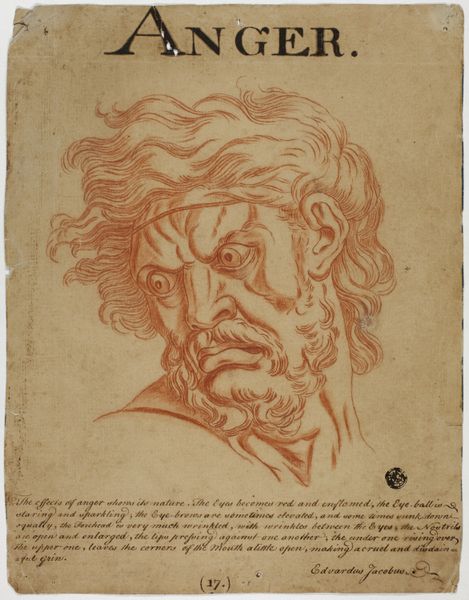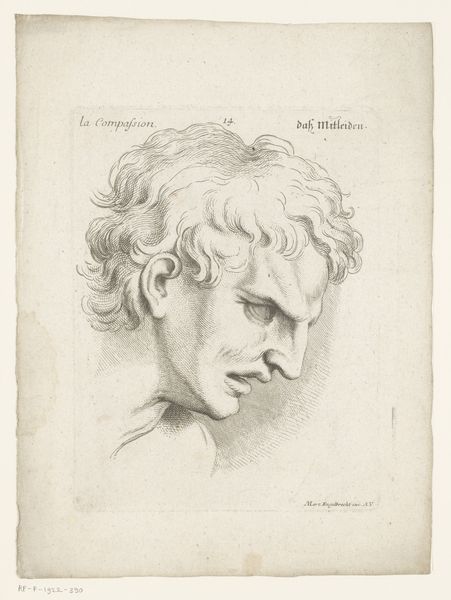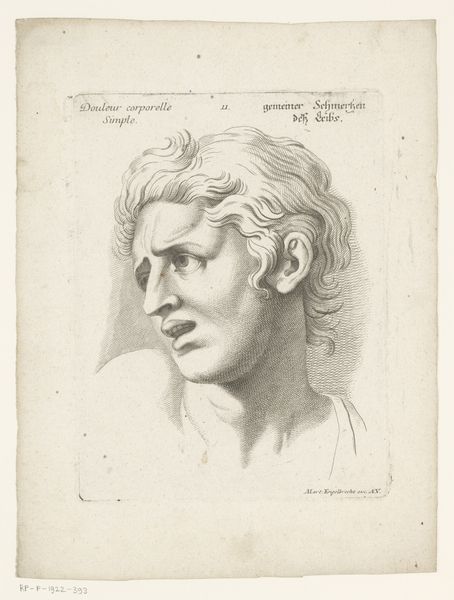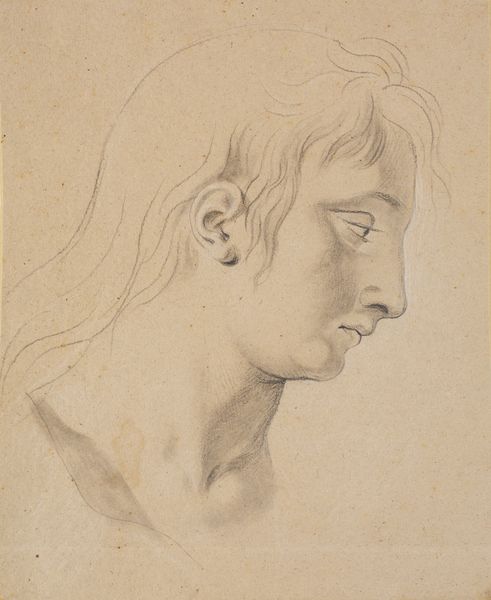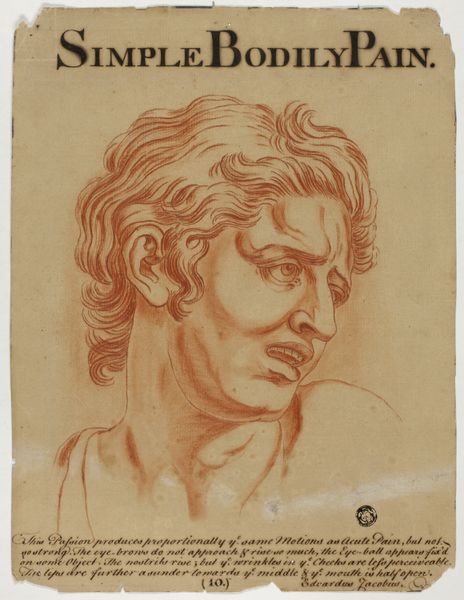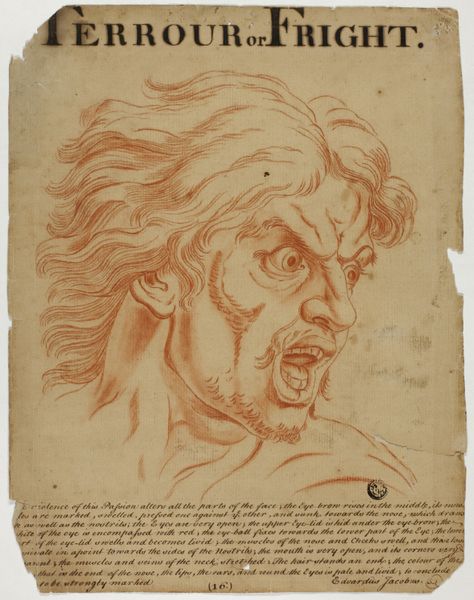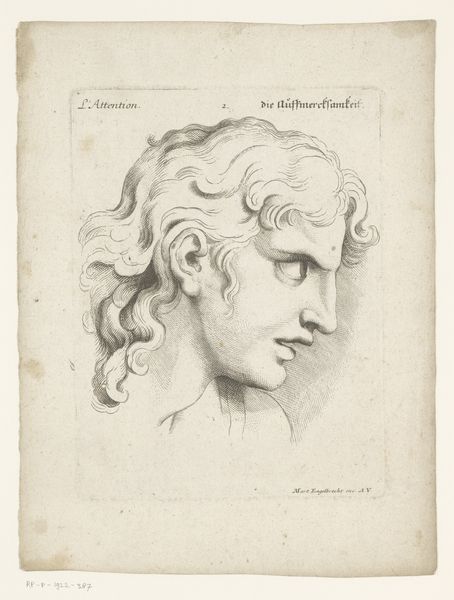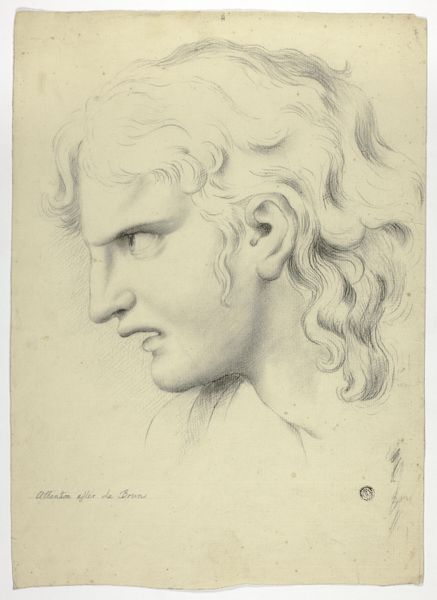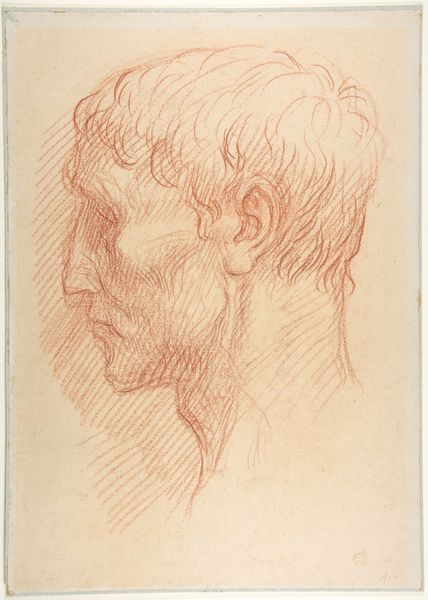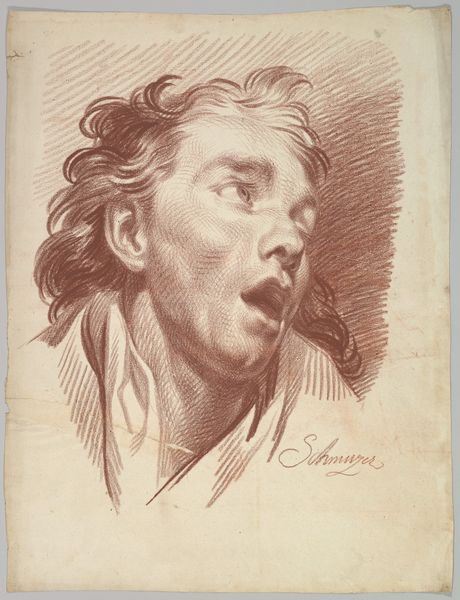
Dimensions: 280 × 220 mm
Copyright: Public Domain
Curator: This drawing, “Compassion” by Eduardus Jacobus, after 1698, appears to be a print, possibly with chalk or graphite additions. Notice how the inscription detailing the anatomy of compassion functions as an integral part of the artwork. I'm struck by the explicit instructions embedded within the image, linking emotion directly to the manipulation of physical materials. Editor: It’s almost scientific in its approach. It doesn't feel like how we think about art today; more like a diagram than an expressive work. How should we understand it in its historical context? Curator: Precisely. We must consider the labor involved. The printmaking process itself – the carving of the plate, the application of ink, the pressure exerted – all contribute to the dissemination of this *idea* of compassion. Jacobus is not just depicting an emotion, but also providing a blueprint for *manufacturing* it, both artistically and, arguably, socially. Do you see the connection between the artist's labor, the printing process, and the creation of this specific kind of "compassion"? Editor: I think so. The text describes almost a formula of how compassion should look, even what muscles should be activated. It's quite prescriptive. Curator: Exactly. And that prescription, circulated widely through printmaking, reveals the social mechanisms at play in constructing and controlling emotional expression. It’s almost mass production of feeling, through careful management of artistic means. The paper it’s printed on, the very ink used to disseminate this image, they are all part of the equation. It moves us away from considering this as a unique expression to more of a… standardised emotion for public consumption? Editor: I see it now! Considering it as a 'manufactured' feeling definitely gives the image new meaning. Thank you! Curator: And thank you for prompting that line of thought. It reinforces the necessity of analyzing artworks as products of their material and social conditions.
Comments
No comments
Be the first to comment and join the conversation on the ultimate creative platform.

